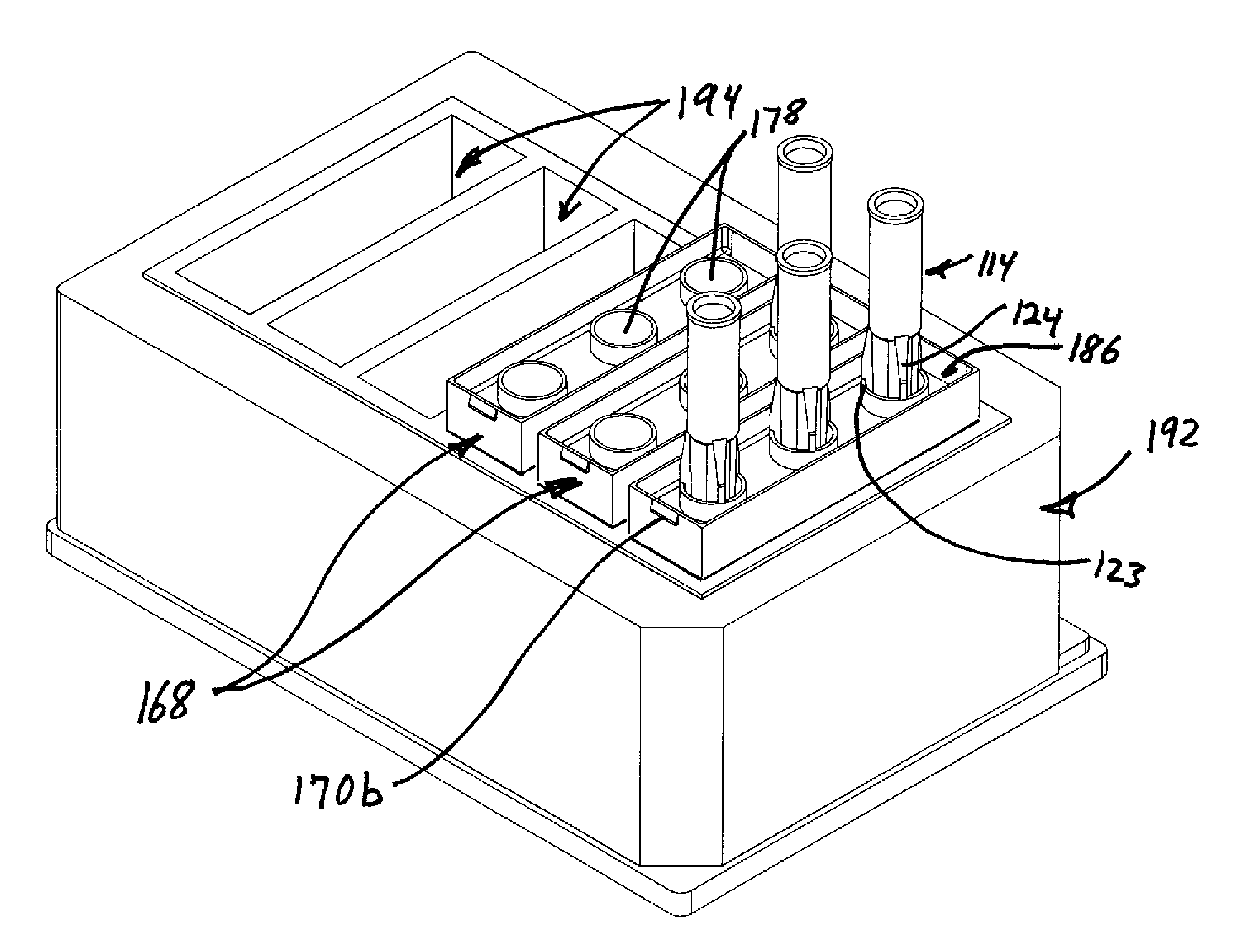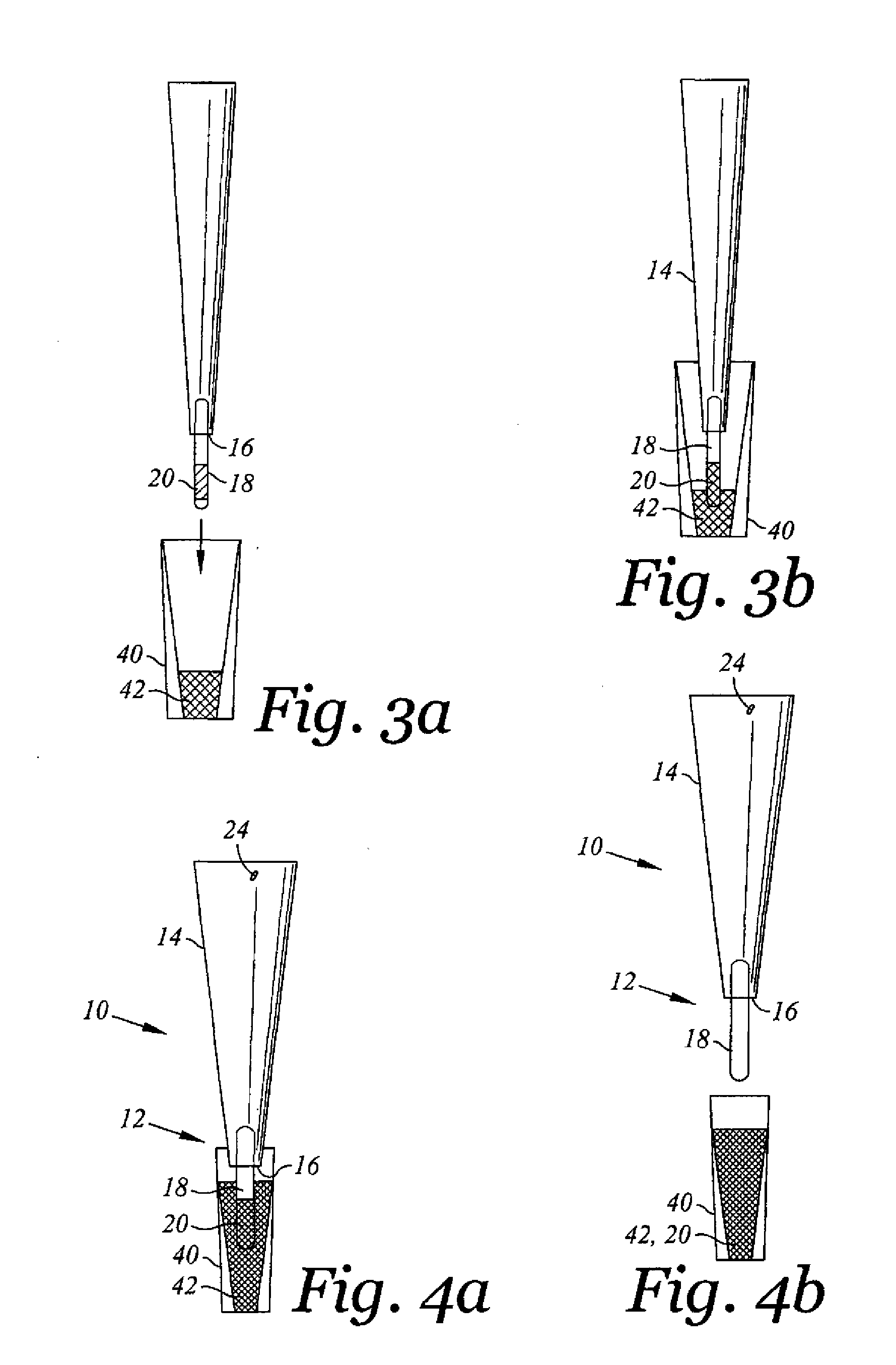Method and apparatus for acquiring blood for testing
- Summary
- Abstract
- Description
- Claims
- Application Information
AI Technical Summary
Benefits of technology
Problems solved by technology
Method used
Image
Examples
Embodiment Construction
[0068]Referring to FIGS. 2-3 and 8, a collection device 10 for collecting various fluids, especially biological fluids and preferably blood, is provided. The device 10 has a sampling end 12 and a holder 14 joined at a juncture 16. The sampling end 12 advantageously comprises an absorbent probe 18 made of a material that wicks up or otherwise absorbs a sample 20 from a fluid source 22, which preferably comprises body fluids and more preferably is blood from a finger-prick or cut 23. The holder 14 may have the absorbent material 18 held in one end, with an opposing end either closed, or preferably open and hollow and optionally configured to allow it to mate with a pipette tip. Releasable adhesives can be used to more securely fasten the parts, but it is believed preferably to force the absorbent probe 18 into a slightly smaller opening in the holder 14 (pipette tip) so the interference fit between the opening and absorbent probe 18 hold the parts together. The device 10 is suitable a...
PUM
 Login to View More
Login to View More Abstract
Description
Claims
Application Information
 Login to View More
Login to View More - R&D
- Intellectual Property
- Life Sciences
- Materials
- Tech Scout
- Unparalleled Data Quality
- Higher Quality Content
- 60% Fewer Hallucinations
Browse by: Latest US Patents, China's latest patents, Technical Efficacy Thesaurus, Application Domain, Technology Topic, Popular Technical Reports.
© 2025 PatSnap. All rights reserved.Legal|Privacy policy|Modern Slavery Act Transparency Statement|Sitemap|About US| Contact US: help@patsnap.com



